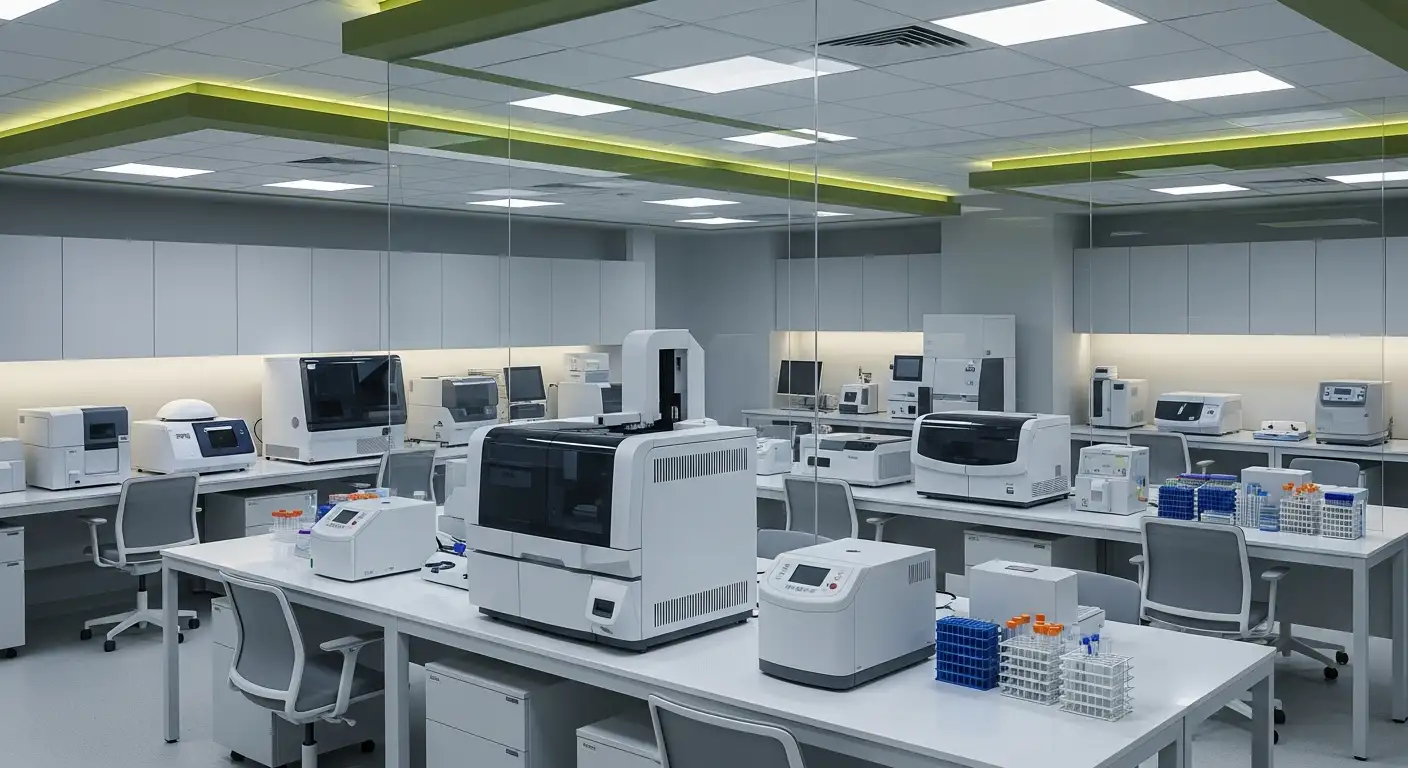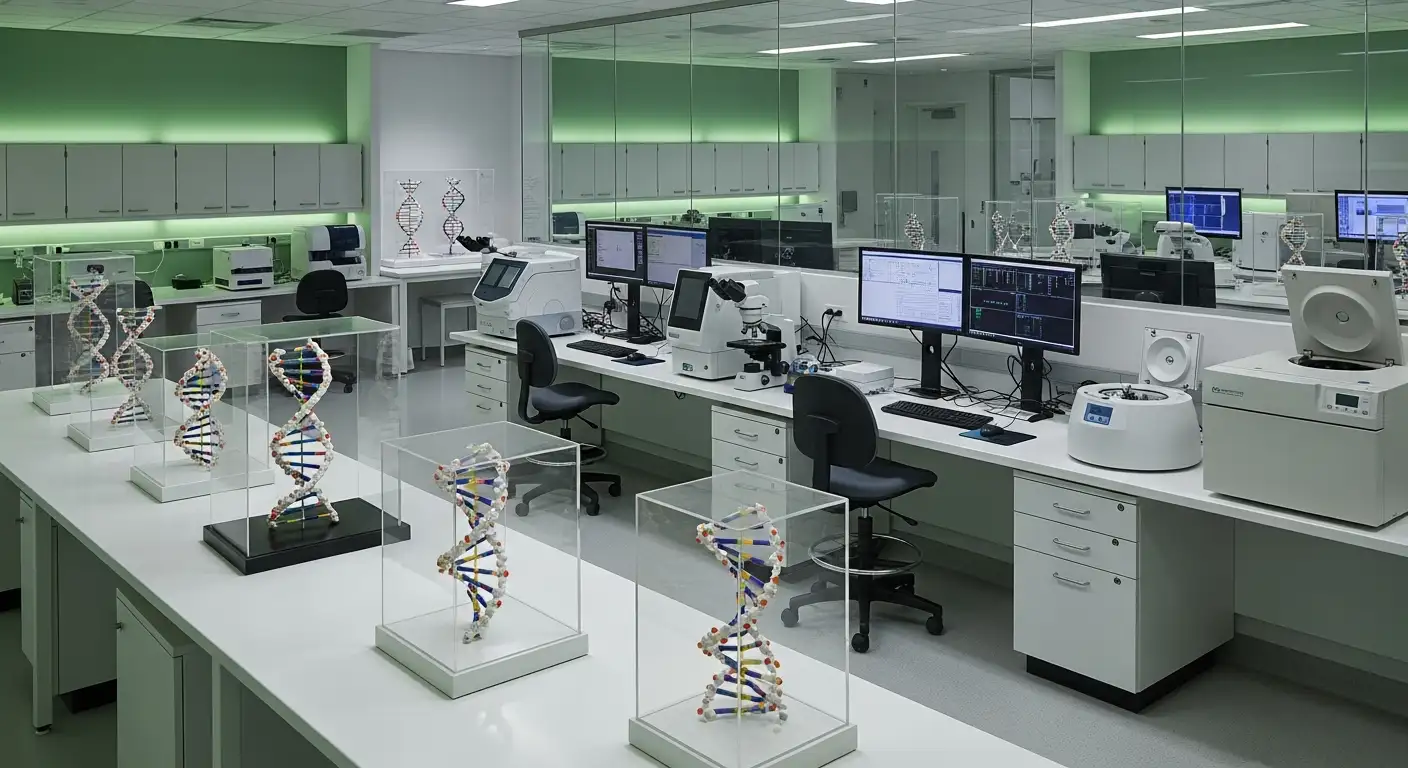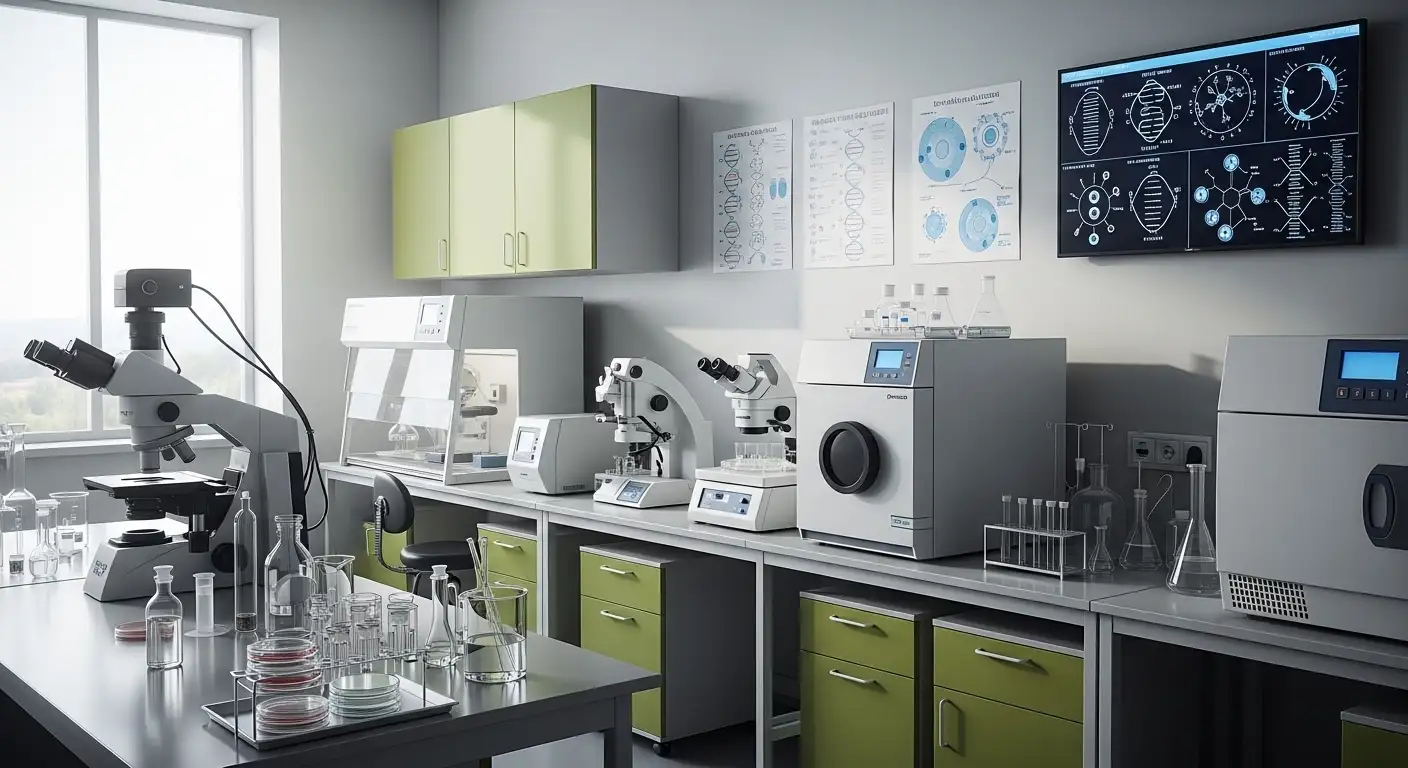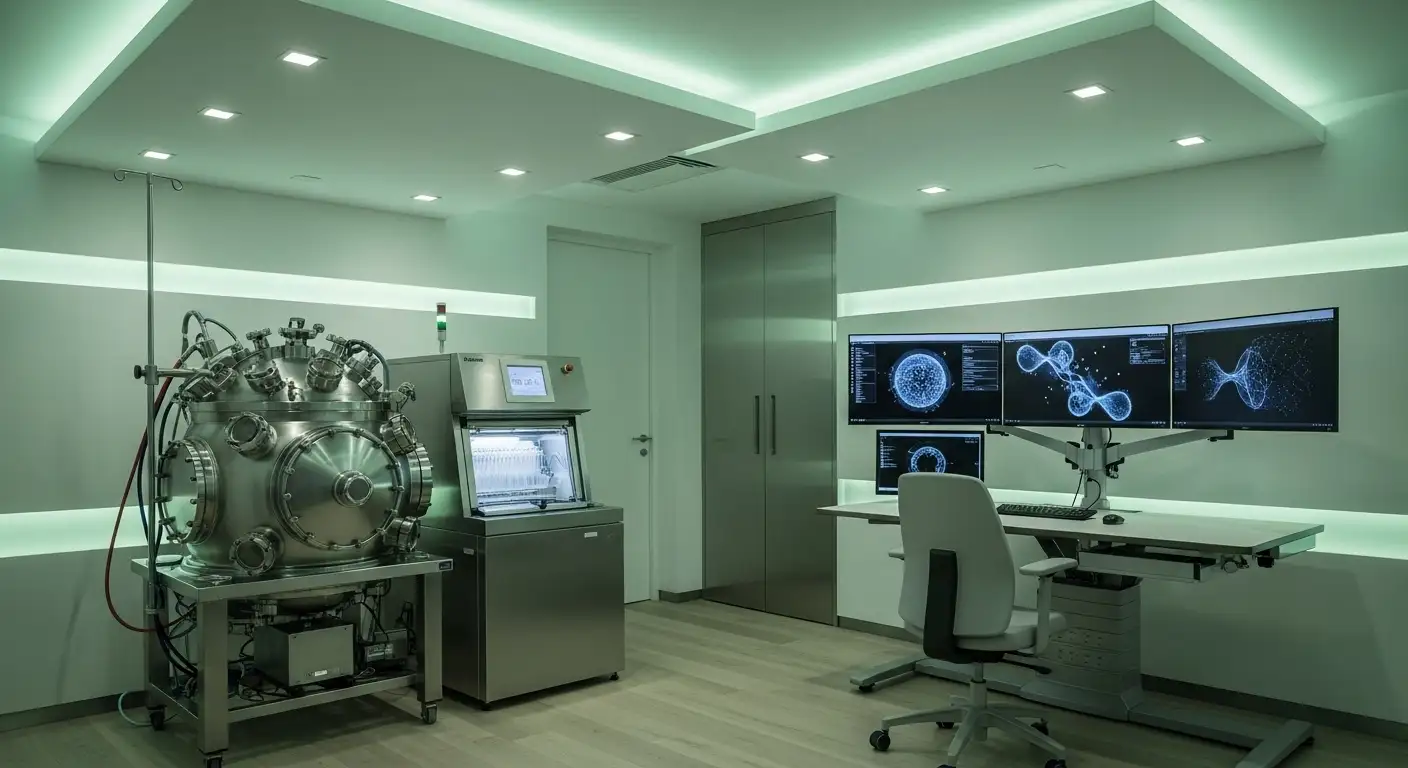The difference between fresh and frozen embryo transfers
Exploring the Distinct Approaches in Embryo Transfer Strategies

Understanding the Fundamentals of Embryo Transfer Techniques
Embryo transfer is a pivotal step in assisted reproductive technology, directly influencing the chances of pregnancy. The two main strategies—fresh and frozen embryo transfers—offer different pathways with unique procedures, advantages, and considerations. Understanding their distinctions helps patients and clinicians make informed decisions tailored to individual circumstances, ultimately aiming to optimize outcomes in fertility treatments.
Overview of Embryo Transfer Options

What are the general fertility treatment options related to embryo transfer strategies?
In fertility treatments such as in vitro fertilization (IVF), there are mainly two types of embryo transfer strategies: fresh embryo transfer and frozen embryo transfer (FET).
Fresh embryo transfer typically occurs within 3 to 5 days after egg retrieval and fertilization. This approach involves transferring the most recent and often highest-quality embryos into the uterus during the same cycle as the ovarian stimulation. Fresh transfers are quicker, providing a relatively fast path to pregnancy, and are often less costly, making them a preferred choice for many patients.
On the other hand, frozen embryo transfer involves cryopreserving all embryos after fertilization. These embryos are stored and then thawed later for transfer, which can happen weeks, months, or even years after the initial egg retrieval. This method offers greater flexibility in scheduling and allows for additional testing, such as preimplantation genetic testing (PGT), which helps select chromosomally normal embryos, potentially increasing success rates and reducing miscarriage risk.
Transfer strategies also differ according to the development stage of the embryo. Embryos can be transferred at the cleavage stage (around Day 3), or at the blastocyst stage (Day 5), which generally has higher implantation and success rates. The choice of stage often depends on embryo quality, patient age, and individual health circumstances.
In some cases, fertility specialists may employ staged or combined approaches. This can include transferring embryos at different stages or combining fresh and frozen transfers to optimize outcomes.
To minimize the risk of multiple pregnancies, most clinics favor single embryo transfer when appropriate, especially with high-quality embryos at the blastocyst stage. This technique reduces risks associated with multiple gestations while maintaining good pregnancy chances.
Overall, the selection of transfer strategy is individualized, taking into account factors such as maternal age, embryo quality, hormone levels, and specific medical conditions. Discussions with healthcare providers help determine the most suitable approach for each patient, aiming for the highest likelihood of a healthy pregnancy.
Procedures for Fresh and Frozen Embryo Transfers
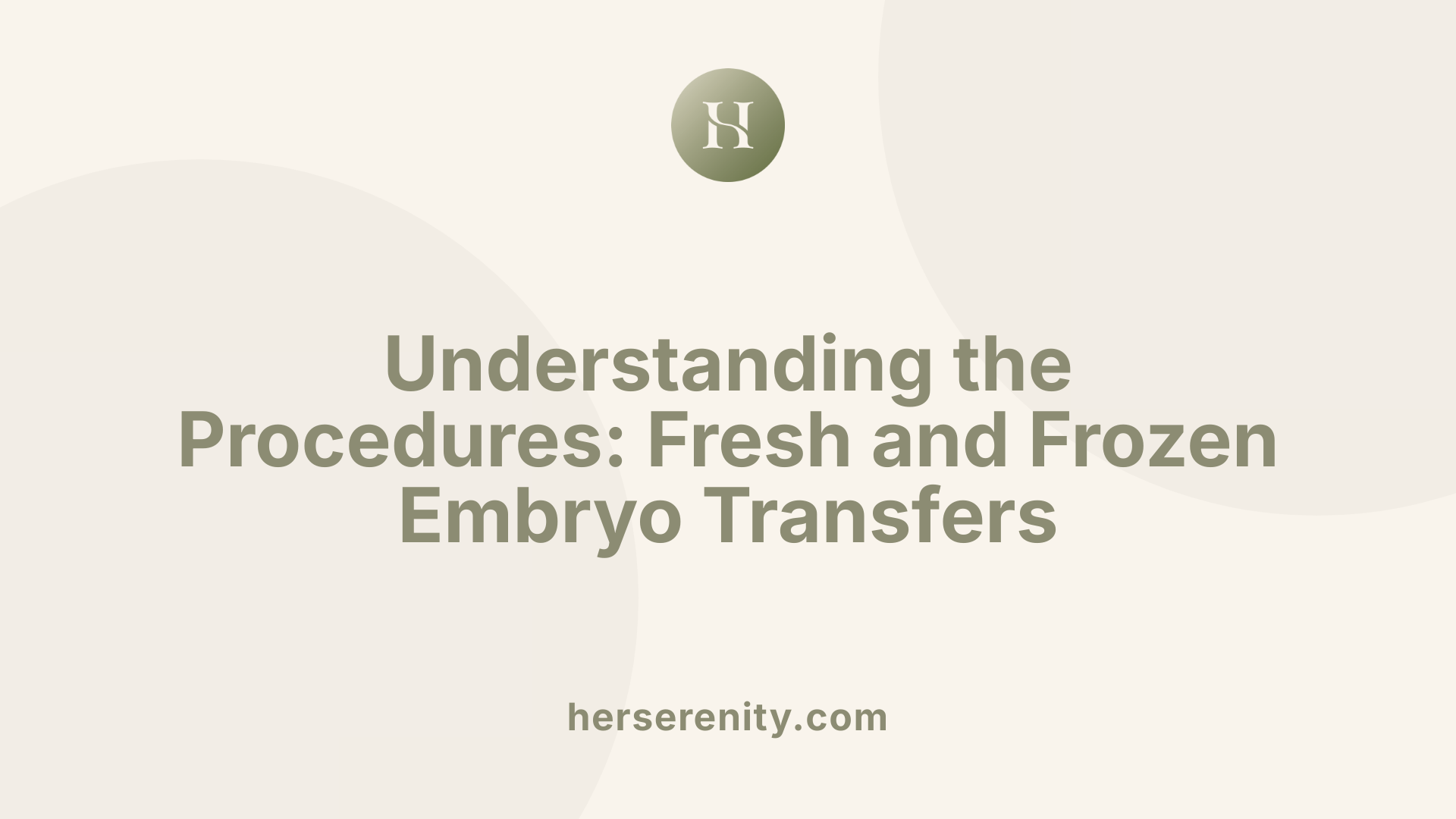
What are the procedures for both fresh and frozen embryo transfers?
Fresh and frozen embryo transfers are two essential approaches in IVF treatments, each involving specific steps to maximize the chances of successful pregnancy.
In a fresh embryo transfer, the process begins shortly after egg retrieval and fertilization. Following ovarian stimulation, fertilized embryos are monitored in the laboratory and typically transferred into the woman’s uterus three to five days later. During the transfer, ultrasound guidance is used to precisely place the embryo into the uterine cavity, ensuring optimal positioning.
Frozen embryo transfer (FET), on the other hand, involves thawing embryos that were previously cryopreserved. The timing of FET is carefully planned based on the woman’s cycle, which can be either natural or hormone-supported. Prior to the transfer, hormonal medications such as estrogen and progesterone are administered to prepare the uterine lining, creating an environment conducive to implantation.
Both transfer methods rely on preparing the uterus for successful embryo implantation. This preparation involves a combination of hormonal treatments to optimize the endometrial lining, making it receptive to the embryo.
The actual transfer process in both methods involves inserting a soft catheter through the cervix into the uterine cavity, where the embryo is gently released. Ultrasound guidance is typically employed to ensure accuracy and avoid injury.
Post-procedure, patients generally rest briefly and are monitored for any immediate discomfort or complications. Success rates depend on multiple factors, including embryo quality, maternal age, and uterine environment, but advances in technique have made both procedures highly effective.
In summary, while the core steps of embryo placement are similar, the main distinction lies in the timing—immediate transfer after fertilization in fresh transfers versus planned transfer after cryopreservation in frozen transfers, allowing for better cycle optimization and embryo selection.
Comparing Success Rates of Fresh versus Frozen Embryo Transfers
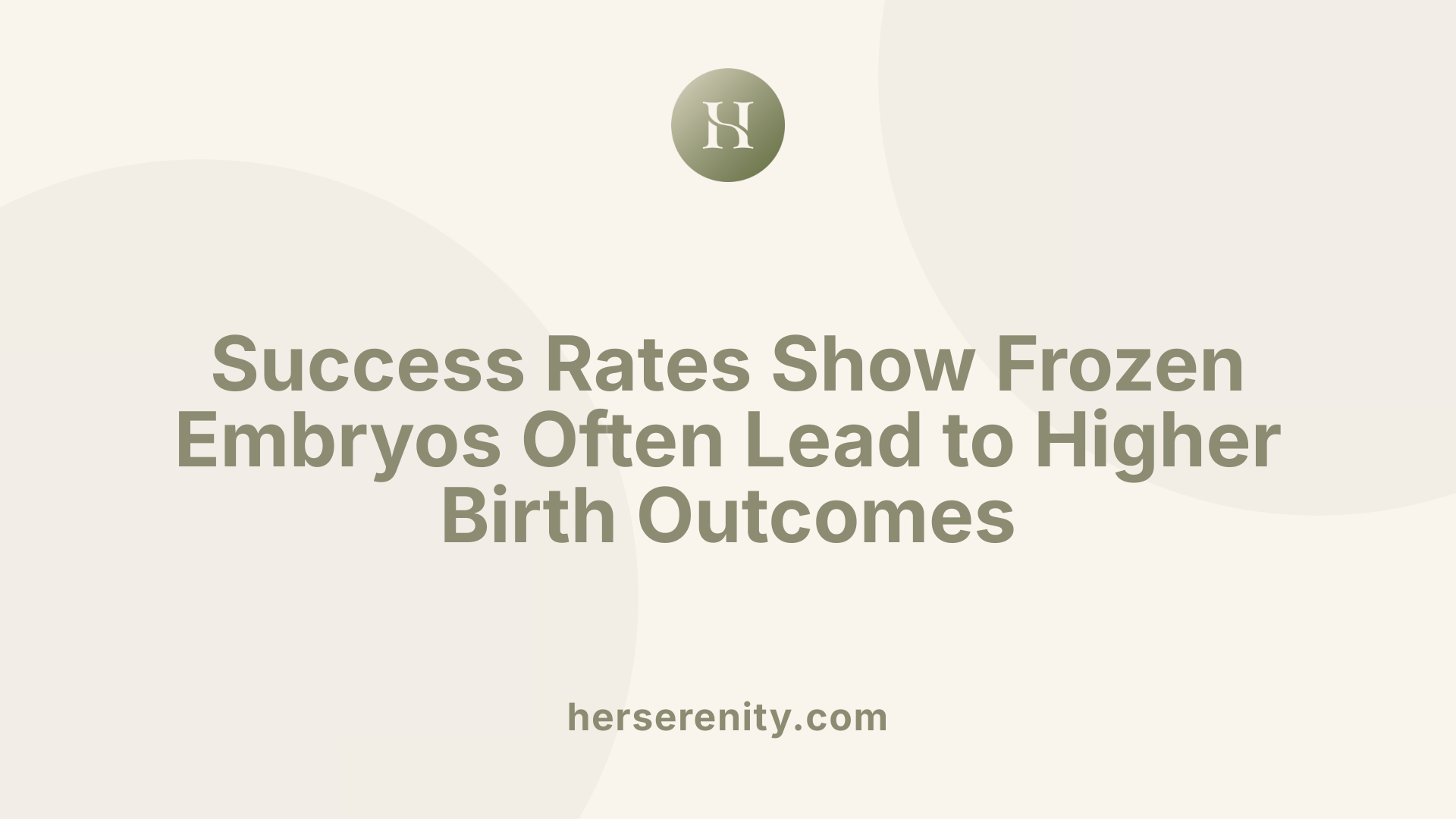
What are the success rates of fresh versus frozen embryo transfers?
Recent scientific studies reveal interesting insights into the success rates of fresh and frozen embryo transfers (FET). Overall, evidence suggests that frozen embryo transfers often lead to higher success rates, including increased implantation rates, ongoing pregnancy rates, and live birth percentages.
For instance, a detailed analysis involving 2,872 women found that the live birth rate was approximately 28.62% with FET, compared to 19.23% with fresh embryo transfer, highlighting the potential advantages of freezing embryos first. Moreover, research from institutions like the Colorado Center for Reproductive Medicine (CCRM) has shown markedly favorable outcomes for FET, especially in women aged between 36 and 42, where live birth rates reached around 74.5% for frozen embryos versus 53.7% for fresh embryos when combined with chromosomal screening techniques.
Studies from around the world consistently demonstrate that pregnancies resulting from frozen embryos tend to have fewer complications. The miscarriage rate in women undergoing chromosomal testing with FET was significantly lower—about 2.8%—compared to 18.5% in fresh transfers. Furthermore, there is evidence suggesting that frozen embryo transfers are associated with beneficial postpartum outcomes, including a reduced risk of pre-term labor.
However, not all findings uniformly favor FET. Some comprehensive studies, including a large-scale 2019 research paper, indicate comparable success rates between fresh and frozen transfers when adjusting for variables such as age and embryo quality. In these cases, live birth rates hover around 44% to 46% for both methods, pointing to the importance of individualized treatment planning.
The variation in success rates underscores that multiple factors influence outcomes. Age remains a significant determinant, with women under 35 generally showing higher success across both procedures. Embryo quality and the ovarian response to stimulation may also tip the scales in favor of one method over the other.
In summary, while recent data lean toward higher success rates with frozen embryo transfers, the optimal choice depends on personal medical conditions, age, and embryo quality. Consulting with fertility specialists can help determine the most suitable approach for each patient.
| Success Metric | Fresh Embryo Transfer | Frozen Embryo Transfer | Additional Notes |
|---|---|---|---|
| Live Birth Rate (general) | ~44-46% | ~46-48% | Success varies by age and health |
| Success in women 36-42 | 53.7% | 74.5% | Higher success with FET, especially with CCS |
| Miscarriage Rate | ~18-19% | ~2-3% | Lower in FET with genetic testing |
| Preterm Labor Risk | Higher | Lower | FET associated with healthier neonatal outcomes |
Understanding these dynamics can help patients and clinicians make informed decisions about the timing and method of embryo transfer in assisted reproductive treatments.
Advantages of Frozen Embryo Transfer
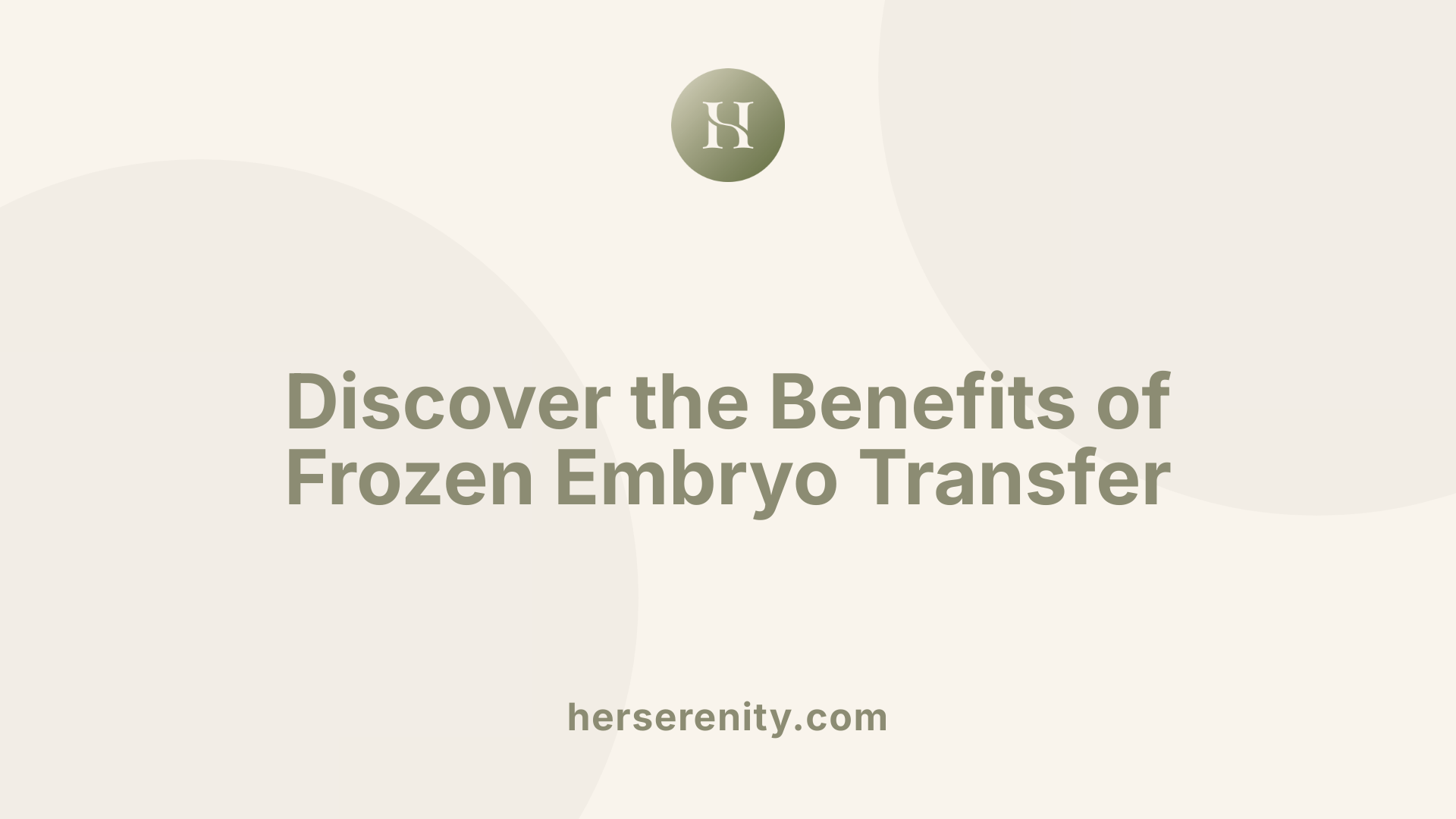
What are the benefits of choosing frozen embryo transfer over a fresh transfer?
Opting for frozen embryo transfer (FET) instead of a fresh transfer comes with numerous advantages that significantly impact pregnancy success and maternal health. One of the primary benefits is the reduced risk of ovarian hyperstimulation syndrome (OHSS), a complication that can occur during ovarian stimulation in IVF cycles. By freezing all embryos and delaying transfer, women avoid the high hormone levels associated with stimulation, which can lower the chance of developing OHSS.
FET also allows the woman's hormone levels to return to normal before transfer, mimicking natural conception conditions. This normalization of hormone levels creates a more receptive uterine environment, increasing the likelihood of successful implantation and pregnancy. Modern vitrification techniques have greatly improved embryo survival rates after freezing and thawing, making frozen embryo transfers just as successful, if not more so, than fresh transfers.
Another advantage is the scheduling flexibility FET provides. Patients can time implantation optimally, often choosing the most suitable moment based on their cycle or personal circumstances. This flexibility can be especially beneficial for women with hormonal imbalances, or those who have experienced previous pregnancy complications.
FET also facilitates preimplantation genetic testing (PGT), which allows embryologists to screen for chromosomal abnormalities and select the most viable and healthy embryos for transfer. This process not only improves pregnancy rates but also reduces the risk of miscarriage. Furthermore, FET has been linked to healthier birth outcomes, including lower rates of preterm labor, low birth weight, and other pregnancy complications.
Research supports that FET can provide higher success rates in specific demographics, such as women over 35 and high responders, contributing to better reproductive outcomes overall. The procedure is also associated with fewer adverse maternal and neonatal outcomes, leading to healthier pregnancies and babies.
In essence, frozen embryo transfer offers significant clinical and practical benefits, making it a preferred choice in many fertility clinics worldwide. It combines safety, effectiveness, and adaptability, helping more women achieve successful pregnancies with fewer risks and better health prospects.
Disadvantages and Considerations in Embryo Transfer
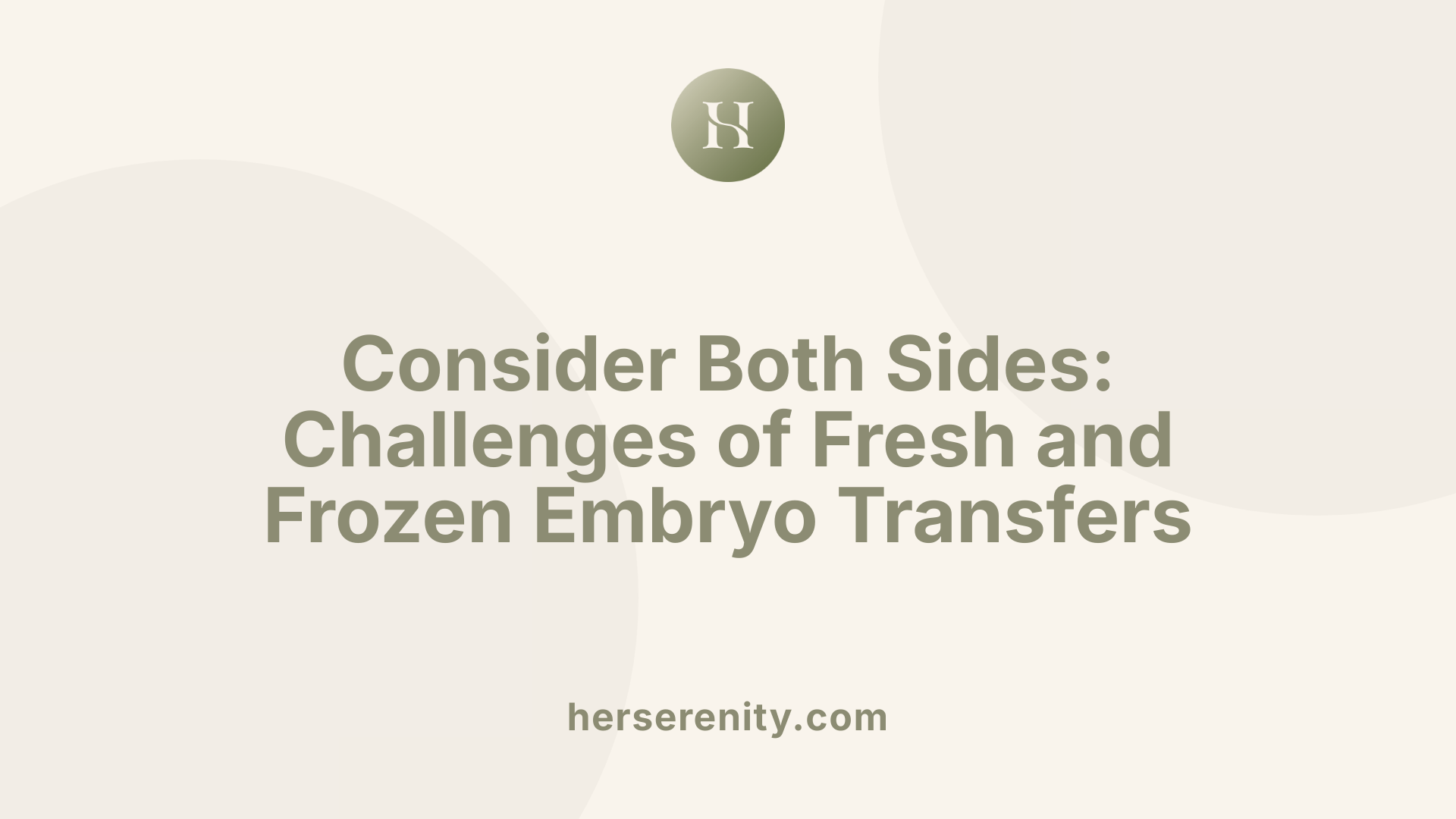
What are the disadvantages or considerations of fresh and frozen embryo transfers?
Both fresh and frozen embryo transfers come with their own set of challenges and considerations that patients and healthcare providers need to weigh carefully.
Fresh embryo transfers are performed immediately after egg retrieval and fertilization, typically within three to five days. While they offer a faster route to pregnancy, they can carry a higher risk of ovarian hyperstimulation syndrome (OHSS), especially in women who respond strongly to ovarian stimulation medications. The hormones used during this process can lead to an environment that is less receptive for implantation, as elevated estrogen and progesterone levels may negatively impair uterine receptivity. This hormonal imbalance can reduce the chances of successful implantation and increase pregnancy loss risk.
In addition to hormonal factors, fresh transfers do not allow time for comprehensive genetic testing of embryos, which could detect chromosomal abnormalities before transfer. This limitation may lead to a lower overall success rate in some cases, particularly in older women or those with recurrent pregnancy losses.
Frozen embryo transfers (FET), on the other hand, involve freezing all viable embryos after fertilization and transferring them in a subsequent cycle. Although this approach addresses some issues associated with fresh transfer, it introduces other considerations. The process of cryopreservation involves freezing and thawing embryos, which, despite technological advancements, carries a risk—although small—of embryo damage or loss. Typically, about 95% of embryos survive the freezing and thawing process, but some may not withstand it.
FET requires additional steps, including preparing the endometrial lining with hormonal therapy and scheduling the transfer during an optimal window, which can extend the overall timeline of treatment. While many studies suggest improved success rates and healthier birth outcomes with frozen embryos—such as lower miscarriage rates and healthier babies—these advantages must be balanced against the increased procedural complexity and cost.
Cost considerations are important. Frozen transfer cycles often involve additional medication, monitoring, and labs, potentially increasing the overall expense compared to a single fresh cycle. Some patients also find the preparation time for FET longer, requiring careful planning and additional appointments.
Overall, the decision between fresh and frozen embryo transfer depends on individual medical circumstances, response to ovarian stimulation, and personal preferences. While frozen transfers offer benefits like better endometrial receptivity and improved success rates in certain populations, they do require more time, effort, and financial investment.
Success in embryo transfer procedures hinges on multiple factors. Fresh transfers might be preferable when immediate pregnancy is desired and hormone levels are suitable. Conversely, frozen transfers are often recommended when hormonal imbalances, risk of OHSS, or genetic testing are considerations.
Understanding and weighing these factors with a fertility specialist can help patients make informed choices tailored to their unique situations, optimizing their chances for a successful pregnancy.
Factors Influencing the Choice Between Fresh and Frozen Transfers
What factors influence the decision between fresh and frozen embryo transfer?
Choosing between a fresh or frozen embryo transfer depends on a variety of individual factors, including age, hormone levels, response to ovarian stimulation, and embryo quality. Women over 35 or those with higher body mass index (BMI) often benefit from frozen transfers, as this allows better control over the hormonal environment, potentially leading to higher success rates.
Embryo stage and quality also matter. Blastocyst-stage embryos (developed for 5 or 6 days) and those of higher quality tend to have higher implantation success, particularly when transferred frozen. Additionally, procedural expertise, including the atraumatic technique used during transfer, can influence outcomes; collecting blood during transfer has been linked to lower pregnancy success.
Individual health conditions and reproductive responses further shape the decision. For instance, women at risk of ovarian hyperstimulation syndrome (OHSS) or with hormone imbalances often experience better outcomes with frozen embryo transfer, which allows the endocrine environment to normalize before implantation.
Recent studies also emphasize the importance of timing and cycle planning. Frozen transfers afford flexibility, enabling scheduling when endometrial conditions are optimal, and can be used in natural or hormone-prepared cycles. This flexibility has led to an increased preference for freeze-all strategies in many clinics.
Finally, considerations regarding the risk of multiple pregnancies, procedural aspects, and the potential for genetic testing further influence the decision. Preimplantation genetic testing, available only on frozen embryos, helps select viable, chromosomally normal embryos, thus improving success rates and reducing miscarriage risks.
| Factors | Impact | Additional Details |
|---|---|---|
| Patient age | Older women benefit from frozen transfers | Success rates higher in women over 35 |
| Hormone levels | Normalize better after freezing cycles | Reduces hormonal interference during transfer |
| Embryo quality | Higher-quality embryos have better odds | Stage (blastocyst vs. cleavage) influences success |
| Ovarian response | High responders may benefit from freeze-all strategy | Reduces OHSS risk and improves outcomes |
| Procedural techniques | Gentle, trauma-free transfer improves success | Blood during transfer reduces success likelihood |
| Genetic testing options | Available only on frozen embryos | Increases success and reduces miscarriage risk |
| Cycle timing | Flexibility for optimal conditions | Delaying transfer when necessary |
Overall, the optimal choice must be tailored by fertility specialists, considering each woman's clinical and personal circumstances, to maximize live birth chances while minimizing risks.
Scientific and Clinical Outcomes of Embryo Transfer Methods
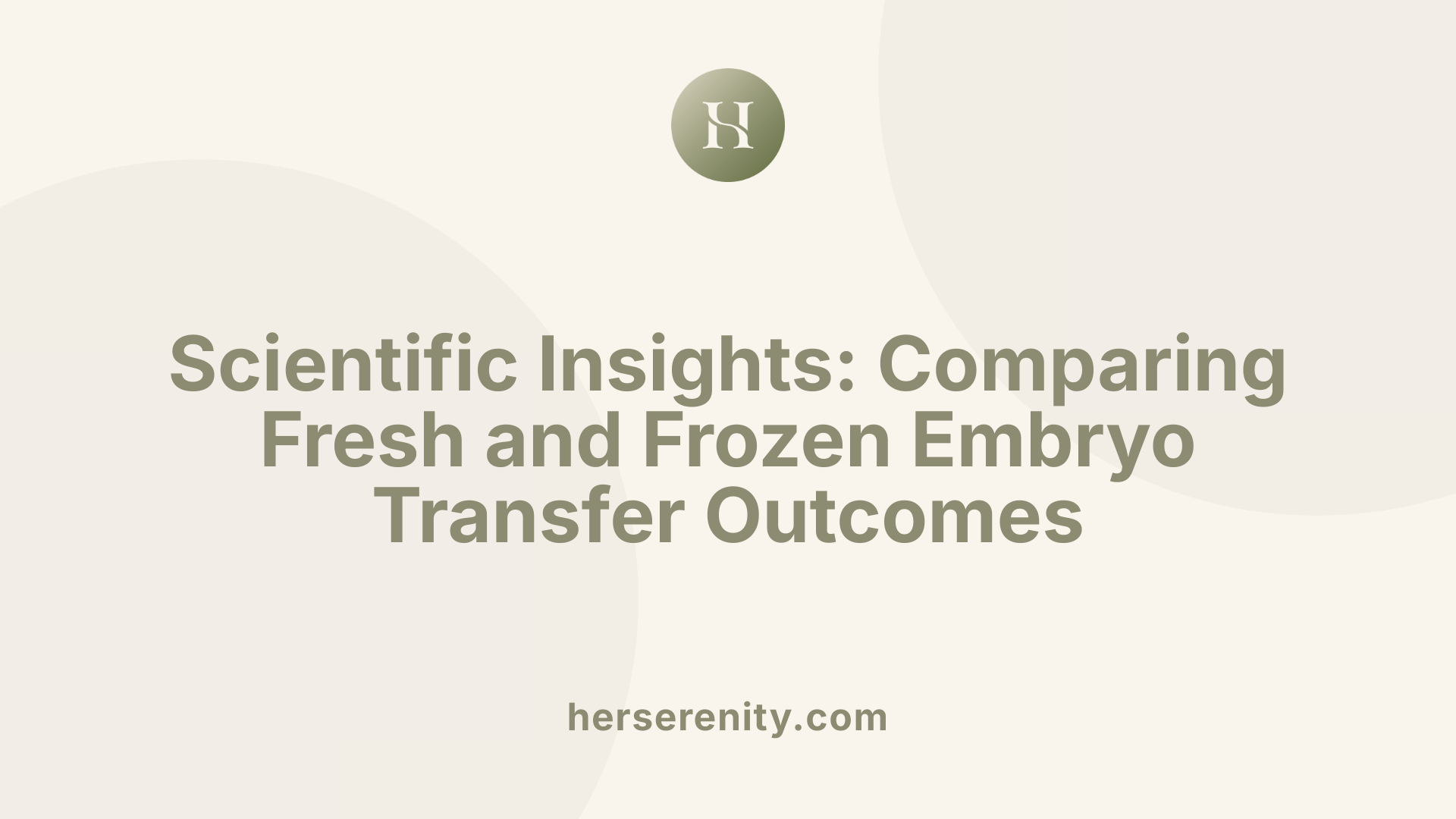
How do medical and scientific outcomes differ between fresh and frozen embryo transfer methods?
Numerous studies and clinical research, including those conducted at prestigious centers like CCRM, have shown that frozen embryo transfer (FET) often leads to improved success rates compared to fresh embryo transfer (ET). FET cycles generally demonstrate higher clinical pregnancy and live birth rates across various age groups. For example, research from 2013 presented at the ASRM found that women aged 36-42 had a live birth rate of 74.5% with frozen embryos, compared to 53.7% with fresh embryos.
The benefits of FET extend beyond success rates. Women undergoing FET tend to experience lower rates of miscarriage—significantly reduced to around 2.8%, versus 18.5% in fresh transfers. Additionally, fetal health outcomes show positive trends with frozen embryos, including lower risks of preterm labor and healthier birth weights.
From a health perspective, studies indicate fewer complications like gestational hypertension and intrauterine growth restriction with FET. The perinatal mortality rate is also lower, emphasizing safer pregnancy outcomes. Moreover, pregnancies from frozen embryos often have a reduced risk of multiple pregnancies, which are associated with higher maternal and neonatal complications.
An important factor contributing to these outcomes is the ability to perform genetic testing, such as Preimplantation Genetic Testing for Aneuploidy (PGT-A), on frozen embryos before transfer. This process enhances embryo selection, ensuring only chromosomally normal embryos are transferred, thereby increasing success rates and reducing miscarriage risk.
Physiologically, FET also mimics natural conditions more closely, allowing the uterine lining to recover from ovarian stimulation, creating a more receptive environment. Hormonal levels stabilize in the cycle leading up to FET, which further supports implantation and reduces the risk of Ovarian Hyperstimulation Syndrome (OHSS).
Impact of medical research and clinical practices
Research from leading fertility centers and professional societies like the American Society for Reproductive Medicine (ASRM) supports the preference for 'freeze-all' protocols in many cases. These practices aim to optimize outcomes by sequencing embryo transfer in cycles with a natural or hormone-prepared environment, rather than immediately after ovarian stimulation.
The evolution of cryopreservation technology, particularly vitrification, has greatly improved embryo survival rates after freezing, now around 95%, making FET a reliable alternative. The ability to delay embryo transfer also allows for better planning and reduces the physical and emotional stress associated with immediate transfers.
Perinatal outcomes and long-term health considerations
Studies consistently show that babies born from frozen embryo transfers tend to have fewer complications, including lower incidence of low birth weight and preterm birth, compared to those from fresh transfers. Additionally, maternal health benefits are observed, with reduced pregnancy-related hypertension and better placental development.
Long-term studies, although still evolving, suggest that children born from FET have health profiles similar to naturally conceived babies, with no significant long-term adverse effects identified thus far. Continuous monitoring and larger epidemiological studies are underway to further elucidate these outcomes.
Studies from reputable clinics and scientific societies
Research data from leading clinics such as CCRM and peer-reviewed publications in journals like Fertility and Sterility have shown that frozen embryo transfer can improve reproductive success, especially in women over 35, women with PCOS, and high responders to ovarian stimulation. The American Society for Reproductive Medicine endorses the use of FET, highlighting its safety and benefits.
In summary, scientific evidence supports the notion that frozen embryo transfer often provides superior or comparable outcomes to fresh transfers, with added advantages in safety and long-term health for mother and child. This consensus encourages a shift toward more widespread use of FET in IVF practices, tailored to individual patient circumstances.
Guidance for Patients on Selecting the Appropriate Method
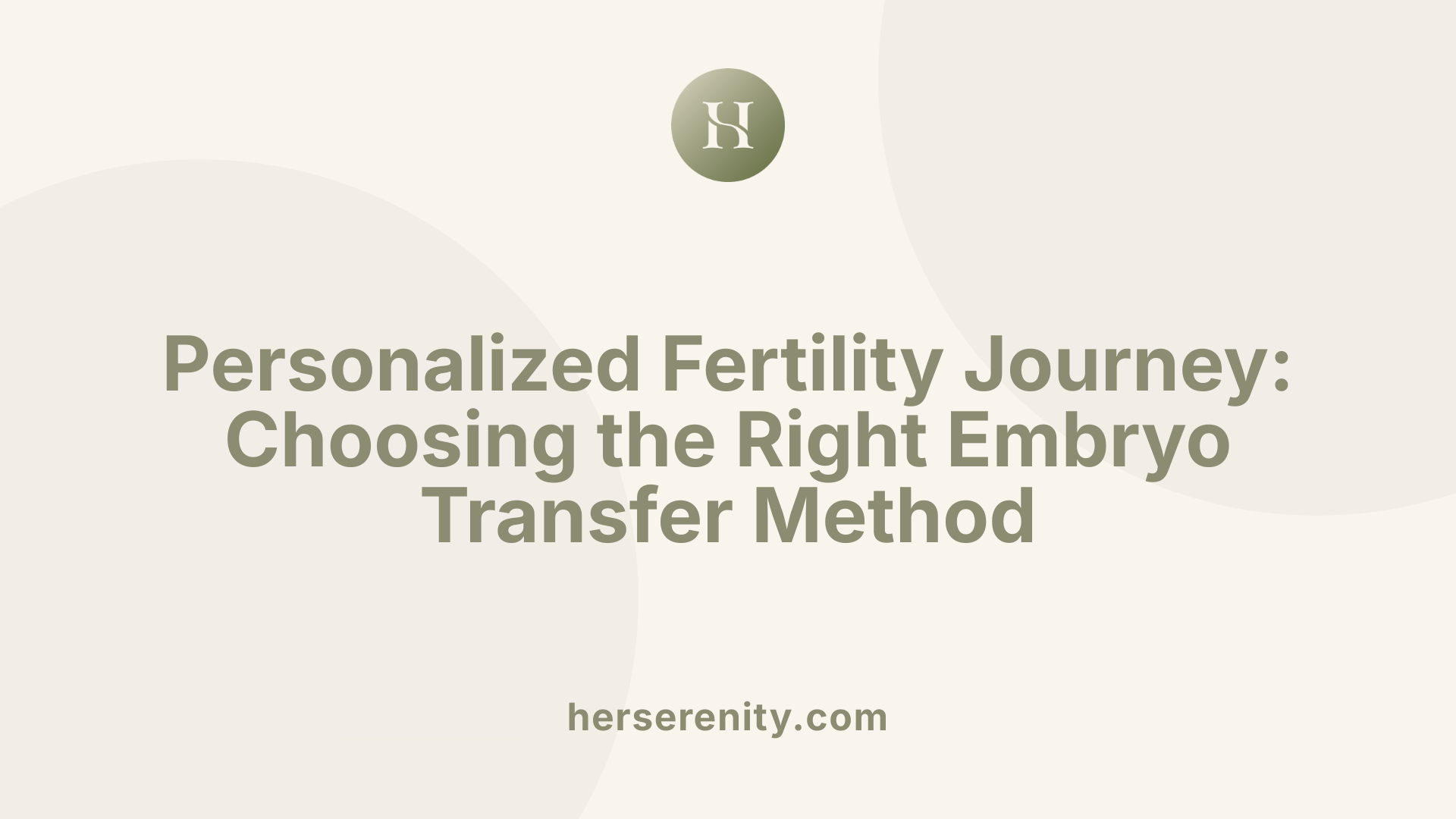
What guidance is available to patients for selecting the most appropriate embryo transfer method?
Choosing between a fresh or frozen embryo transfer is a significant decision in IVF treatment. Patients are encouraged to work closely with their fertility specialists to determine the best approach, considering their unique medical history and reproductive goals.
The decision-making process should evaluate factors like embryo quality, previous pregnancy outcomes, and individual health conditions. For example, women over 35 or those with ovarian hyperstimulation syndrome (OHSS) risk may benefit more from frozen embryo transfer, which offers a more natural uterine environment and can improve success rates.
Fertility experts recommend thorough assessment of personal health data, including hormone levels, ovarian response, and embryo viability. This personalized planning helps optimize success chances and minimize risks.
Technical considerations also play a vital role. The use of ultrasound guidance during embryo placement, selecting the upper or middle uterine cavity for transfer, and utilizing a soft transfer catheter are evidence-based practices to enhance implantation success.
Most practitioners prefer single embryo transfers when conditions are favorable, especially for younger women, to reduce the risk of multiple pregnancies and associated complications.
Post-procedure care, such as recommending immediate ambulation and discouraging bed rest, has been supported by recent studies. These practices are believed to promote better embryo implantation and overall pregnancy success.
Overall, individual treatment should involve evaluating all these factors to choose the method that best aligns with the patient’s medical profile and life circumstances, thus empowering women with personalized reproductive care.
| Factors to Consider | Impact on Success | Additional Notes |
|---|---|---|
| Patient’s age | Higher success with FET below 35 | Success rates decrease with increasing age |
| Embryo quality | Better selection with genetic testing | PGT allows sex and abnormality screening |
| Medical history | Ovarian response and OHSS risk | Individual health conditions influence choice |
| Timing flexibility | FET allows scheduling when optimal | Delays do not compromise chances |
| Technique and procedures | Use ultrasound, soft catheters | Improve embryo placement and success |
| Number of embryos transferred | Single embryo recommended | Reduces risk of multiples |
This personalized approach helps ensure that each patient receives the most suitable and effective treatment option, leading to higher chances of successful pregnancy.
The Optimal Approach in Embryo Transfer Strategy
While both fresh and frozen embryo transfers are valuable techniques within assisted reproduction, recent research and clinical experience increasingly support the use of frozen embryo transfer as the preferred method in many scenarios due to its higher success rates, lower risks, and ability to incorporate advanced genetic testing. The choice between the two should be individualized, considering patient health, ovarian response, embryo quality, and lifestyle factors. Collaborating closely with a fertility specialist ensures the selection of a strategy that maximizes the chances of a healthy pregnancy and healthy baby, ultimately leading to improved reproductive outcomes.
References
- Fresh vs. frozen embryo transfer success rates
- What Is Fresh vs. Frozen IVF Embryo Transfer | CCRM Fertility Clinic
- Fresh vs. Frozen Embryo Transfer: Which Path Is Best? | Blog
- Fresh vs. Frozen Embryo Transfers - Best Option - CT IVF
- For Women Undergoing IVF, Is Fresh or Frozen Embryo Transfer Best?
- The comparison of pregnancy outcomes in fresh and frozen embryo ...
- Fresh vs. Frozen Embryo Transfer: What's the Difference?


